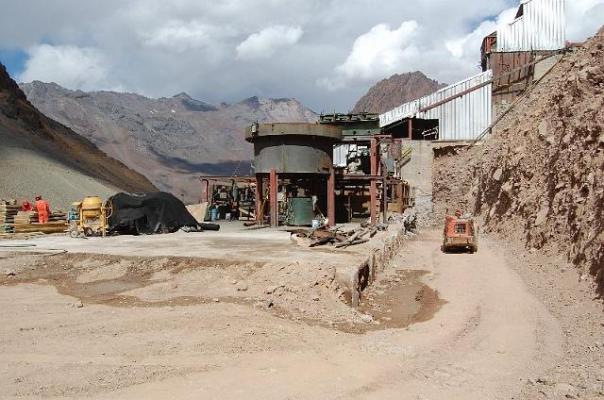At the end of January, the Toronto Stock Exchange launched a delisting review of Cerro Grande Mining (TSX: CEG; US-OTC: CEGMF) to determine whether the junior could keep a $2-million market value for 30 straight trading days.
Things got even tougher for the junior in May when the municipal government of San Esteban in central Chile forced Cerro Grande to shut down its Pimenton underground gold–copper mine because it lacked a municipal permit for the plant and camp buildings.
Since then, however, some of the gloom hanging over the company has lifted. On June 12, Cerro Grande received permission to restart operations at Pimenton and two weeks later, the TSX deferred a delisting decision until July 25. Last week, Cerro Grande announced that it has signed a letter of engagement with Westmount Capital, a Switzerland-based capital markets firm, to arrange a private placement of non-convertible debentures for up to $3 million.
In the meantime, Cerro Grande’s founder and CEO Stephen Houghton says that the company is making progress at Pimenton regarding production and cost-cutting.
In the second quarter Pimenton produced 2,643 oz. gold, up from 2,558 oz. gold in the first quarter of the year, while cash costs fell from US$919 to US$778 per oz. Houghton says the company has driven costs down by slashing administrative costs (replacing one auditor with a less expensive rival), securing reductions on insurance and trimming mine staff from 340 to 230. Houghton says the company can reduce costs without affecting production.
“We’ve gotten more efficient,” he says over the telephone. “A lot of companies hire people and then realize they didn’t really need them.” Houghton also points to the fact that Cerro Grande is getting between six tonnes per man day and eight tonnes per man day from its 80 cm wide stopes.
Sid Rajeev, head of equity research at Fundamental Research Corp., argues that the company “may be worth much more than what they are trading at.” (At press time Cerro Grande traded at 5.5¢ per share within a 52-week range of 1¢ to 24¢ per share.).
“Although cash flows have been declining over the past few years [due to lower gold prices and gold production from the mine], the company came out with highly positive and encouraging results in Q2 [ended March 31, 2014], which, I believe, went totally unnoticed,” he wrote in a June 16 note to clients.
In addition to Pimenton, Cerro Grande also owns the exploration-stage Tordillo project, 11.5 km from Pimenton.
Pimenton is a narrow, high-grade underground mine that Houghton says overlies a copper porphyry deposit. It is producing 38,000 tonnes a year at an average grade of 12 grams gold per tonne, but he says the average grade could rise to 13 grams gold per tonne, “because historically, we’ve had months where we’re getting higher than 14 grams gold and 1–1.5% copper, and a little bit of silver.”
The mine went into production briefly in 1998 and the company nearly completed a feasibility study to take production from 200 tonnes per day to 400 tonnes per day when it was hit by fallout from the Bre-X salting scandal.
“We were the second-to-last company that Nesbitt Burns had taken public before Bre-X, so our stock plummeted like a rock,” Houghton recalls.
The mine stayed out of production for the next four years but restarted in 2002 after management secured a US$2.8-million loan from Washington, D.C.-based Overseas Private Banking Corp.
A severe snowstorm in June 2005, however, which brought 7 metres of snow, forced the company to shut down again. It didn’t resume until 2009.
Houghton says that when he first came across the Pimenton property in 1995, he “liked the potential of using cash flow from the veins to do more work on the porphyry.” The company now has three drill rigs, one of which is exploring the porphyry from underground.
Cerro Grande credits the Pimenton discovery to executive vice-president and director of exploration David Thomson, who headed up a joint-venture exploration project in Chile run by BTX, Anglo American (LSE: AAL) and Teck Cominco, now Teck Resources (TSX: TCK.B; NYSE: TCK).
The Santiago-based graduate of the Royal College of Science — who holds a PhD from the Royal School of Mines at Imperial College, London — is also credited by Cerro Grande for discovering the copper–lead–zinc–silver–gold Madrigal mine in Peru, helping develop the El Indio gold mine in Chile and the Pascua project, both owned by Barrick Gold (TSX: ABX; NYSE: ABX).
While heading up the BTX–Anglo American–Cominco joint-venture, Thomson was also involved in discovering Marte-Lobo, Refugio, Esperanza, Caserones, West Wall and Novicio, Cerro Grande says.


Be the first to comment on "Cerro Grande cuts costs at Pimenton"